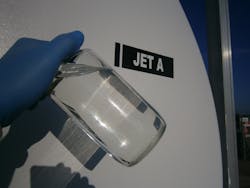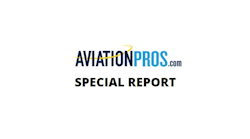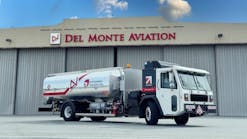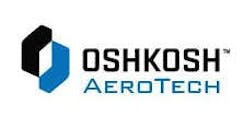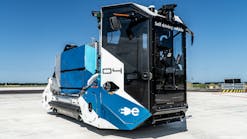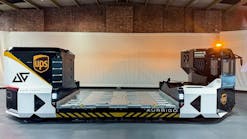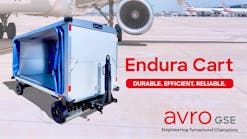Often the Aviation Training Academy is consulted in regard to soak testing of aviation fuel systems. This procedure should be carried out at the completion of new construction or major repairs to tanks or piping on both fuel storage systems and fueling vehicles.
An abbreviated laboratory evaluation of fuel samples can confirm that no potential contaminants are present in the form of solvents from coatings/linings, welding flux, preservative oils (corrosion inhibitors), valve grease or other debris that could produce catastrophic results in the fuel. Acquisition or modification contracts for new fuel systems or vehicles should include a clause that requires the manufacturer or contractor to provide evidence that a proper soak test has been performed and the test results verify that the fuel meets the appropriate American Society of Testing and Materials (ASTM) specifications.
Before fuel is introduced into the system, a “retention sample” should be appropriately obtained — see the Correct Sampling section of this column — as a “control” in the event testing reveals an off-specification product.
A soak test consists of the filling of a fuel system — stainless-steel, aluminum, epoxy lined or rubber bladder — with an adequate volume of the appropriate fuel grade, and after recommended circulation procedures, allowing it to soak for a specified time period.
Storage Tanks, Piping and Ancillary Equipment
If the stringent requirements of EI 1541 Standard Performance Requirements for Coatings of Storage Tanks and Piping are followed, risk of fuel contamination is dramatically reduced.
Adherence to this industry standard ensures proper coating materials are properly applied and allowed to fully cure as recommended by the manufacturer. Storage tanks – including piping, pumps, valves, meters, filter vessels, etc. – are filled to a normal level, recirculated completely at least once, allowed to soak for a minimum of four days and a maximum of seven days.
At the end of the designated soak period, a correctly obtained one-gallon sample is taken from the new or repaired system, and sent for laboratory evaluation. The best location to obtain a sample is the low point drain.
It is worth noting that personnel must remember to displace an adequate volume in the sampling piping to ensure a truly representative sample of the tank bottom.
Vehicles
All fuel servicing vehicles with tanks and piping of aluminum or stainless steel should have the appropriate fuel circulated throughout the system.
Fueling vehicles — aluminum or stainless-steel tanks, new, repaired, extended periods out of service — are filled to a normal level, recirculated completely at least once, allowed to soak for minimum of one hour. A representative sample of one gallon should be obtained from any combination of multiple low point drains and may be combined into a single sample.
Hoses
Every fueler loading hose and every aircraft fueling hose must meet the industry standard EI 1529/IOS 1825 and initially be filled completely with the appropriate fuel and allowed to soak for a minimum of eight hours.
The fuel in the hose used for soaking must be disposed of properly. The hose should be refilled, and an appearance check must verify the absence of any manufacturing residue, or discoloration. The fuel should then be recirculated at least twice the hose’s volume back into storage, upstream of filtration. This shall be followed by a hose-end nozzle strainer inspection, confirming the absence of any particulate contamination.
The Laboratory Testing of Samples
In the case of AVGAS 100LL, the critical aspects of contamination are interfacial tension — how well water separates out from fuel) — and gum contamination, which leads to engine anomalies.
The tests that should be performed on AVGAS 100LL include ASTM D4176 Appearance, ASTM D381 Existing Gum, ASTM D1094 Water Reaction and ASTM D2887 Distillation (more sensitive to residues and chemical contamination than ASTM D86).
With aviation turbine fuels (jet fuels), the same issues of water separation and gum contamination should be evaluated with the addition of testing the flash point.
The JFTOT test reveals a change in volatility along with oxidation characteristics, additionally evaluating insoluble and soluble materials that form deposits in the engine. The tests for jet fuels include ASTM D4176 Appearance, ASTM D156 Saybolt Color, ASTM D381 Existing Gum, ASTM D3948 MSEP, ASTM D2624 Conductivity, ASTM D3241 Thermal Stability (JFTOT), ASTM D56 Flash Point and ASTM D2887 Distillation (more sensitive to residues and chemical contamination than ASTM D86).
Correct Sampling
Sampling procedures, sample handling and sample preparation are all key elements of the successful testing of aviation fuel. If an aviation jet fuel sample is drawn through sample points that incorporate metals such as cadmium, brass or copper, the JFTOT results may fail. Or, if galvanized piping (zinc) is used in AVGAS 100LL that may very well alter laboratory test results.
It is important that the sampling point is clean and flushed before taking a sample.
Accumulated solid particulate matter and/or any free water should be removed, and final fuel samples should be clear and bright. A one-gallon (U.S. gallon) approved epoxy lined sample container shall be utilized, flushed and triple-rinsed with the fuel to be sampled and tested.
Walter P. Chartrand draws from 40 years of experience in the aviation industry to share ideas and practices on how to set aviation operations apart in a very highly competitive general aviation marketplace. Chartrand began his career at a local airport fueling small aircraft, growing to manage one of the nation’s most prestigious corporate jet service centers in Houston. He earned his multi-engine instrument pilot ratings and has flown for a living. His career has taken him from the world's largest integrated oil company where his talents were put to work ensuring quality fuel products to his own training and consulting company working to improve the safety and profitability of the general, corporate and commercial aviation marketplace. Chartrand's formal education includes an Associate Degree in Aeronautical Science and a Bachelor of Science Degree in Mechanical Engineering with a minor in Technical Education.
